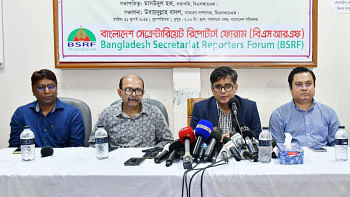Multibillion-dollar zakat fund remains underused: study
Countries like Bangladesh with a sizable Muslim population are failing to use zakat donations to cut poverty significantly due to lack of professional management and poor book-keeping, leaving assets worth billions of dollars unutilised, a study said.
Islamic alms-giving (zakat) and endowments (waqf) have been in existence for centuries, but are yet to develop efficient use of the assets held by the charitable organisations, the Islamic Research and Training Institute (IRTI) and Thomson Reuters said in the study.
The asset pools that remain unutilised include vast real estate portfolios that are often poorly managed, which could otherwise help reduce poverty across Muslim communities.
"At a micro level, institutions in this sector need to address the issue of sustainability in the supply of funds," said Azmi Omar, director general of the IRTI, a unit of Jeddah-based Islamic Development Bank.
This would involve professionals who are adequately trained not just in shariah-compliance but also in modern financial management techniques for charity-based and not-for-profit institutions, he added.
The study estimates that zakat donations could contribute significantly to poverty alleviation in countries such as Indonesia, India, Pakistan, Bangladesh, Malaysia, Singapore and Brunei, which together account for 45 percent of the world's population.
Muslim minorities in India and Singapore, for instance, could collect zakat in the range of about 0.26 percent to 0.65 percent of their gross domestic product.
The study said the poor as beneficiaries account for above 90 percent in Indonesia, India, Pakistan, Bangladesh.
Growth of zakat contributions in some countries has often been in the double digits: Indonesia collected $231.6 million in 2012, up 27.3 percent from a year earlier; Pakistan collected $105 million in 2011, up 34.5 percent from a year earlier.
Malaysia had one of the largest donation pools with 1.6 billion ringgit, or $497 million, collected in 2011, a 20.3 percent increase from a year earlier.
While there is no official data for India, the report estimated total annual zakat collections stood at a whopping $1.5 billion.
But it is hard to mobilise these resources because of a lack of standardised and globally accepted definitions of what assets are eligible for zakat and how to estimate zakat donations, the study said.
The study also shed light on assets held by Islamic endowments, where India again holds the most untapped potential.
In Bangladesh, a government survey identified 150,593 waqf properties in the country, although only 15,300 were registered with the concerned government administrator.
For Bangladesh, zakat collection in 2010 was about Tk 110 billion or $1.4 billion, which was equivalent to 1.4 percent of gross domestic product of 2011-12.
State-run Zakat Board of the Islamic Foundation collected Tk 14.2 million in 2011 and expected to collect Tk 20 million in 2012.
Distribution of clothes is a traditional method of zakat distribution. Institutional distribution of zakat is more diversified and takes the form of scholarship programmes for poor students, rehabilitation and training for poor women, rehabilitation of widows, housing for the poor, and distribution of rickshaws for the unemployed young people in villages.

 For all latest news, follow The Daily Star's Google News channel.
For all latest news, follow The Daily Star's Google News channel. 



Comments